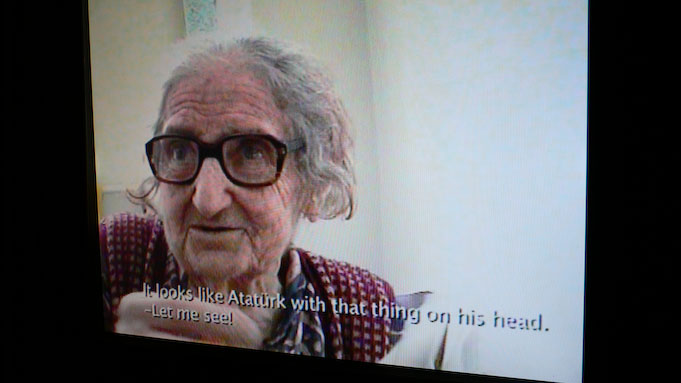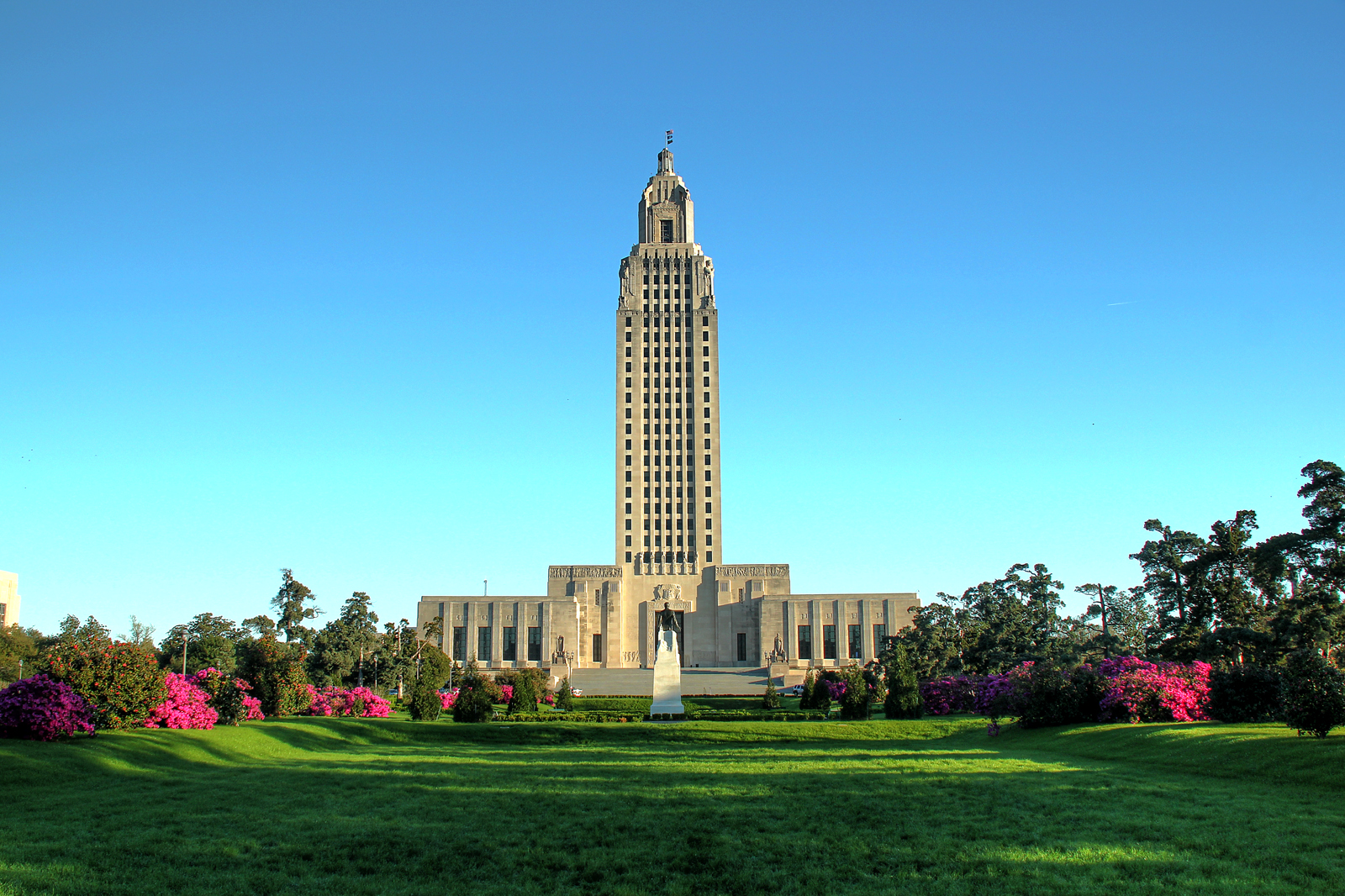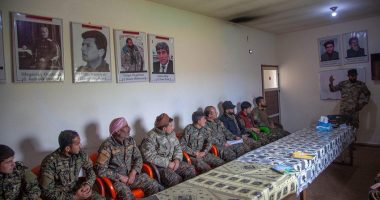By Hambersom Aghbashian
Kutluğ Ataman (born in 1961 in Istanbul, Turkey) is a Turkish filmmaker and contemporary artist. Ataman makes films that both reflect and address “a given community,” frequently Turkish. He received his school education in Istanbul before doing his university studies in the US. His interest in film started at an early age, and led him to do film studies at UCLA where he graduated with an MFA (Master of Fine Arts) in 1988. Ataman began his career as a documentary and feature filmmaker. As an 18-year-old, left-wing activist, he recorded the street protests that preceded the Turkish military coup of 1980; those early films were confiscated and destroyed by the military authorities following a raid on Ataman’s house. He was arrested, imprisoned for 28 days, and subjected to beatings and electric shocks. Ataman established himself as a film-maker with Serpent’s Tale (Karanlık Sular) (1994), and has gone on to make two further features: Lola+Bilidikid (1998) and 2 Girls (2005). His most recent film is Journey to the Moon” (2009). He has won many awards for his films, was nominated for the 2004 Turner Prize, won the Carnegie Prize in the same year and the Capital Abraaj Prize in 2009. In 2011 he received the European Cultural Foundation’s Princess Margriet Award. His works are in collections such as MoMA New York and the Tate, and have also been shown in the major Biennials, including Venice and São Paulo, and at Documenta. Kutluğ Ataman was Chair of the Jury at the Istanbul International Film Festival in April 2009.


“Testimony”, 2006, is one of Ataman’s art works exhibited in Istanbul.[İstanbul Biennial, İstanbul, Turkey, 2007]. It is about the Armenian genocide and the Turkish amnesia. Talking about the film, Ataman said: “The subject of this home-video style footage is my, and my father’s, nanny. She was an Armenian infant when she was brought into the family, (was brought into the family by great-grandfather after her family was killed in 1915), and from that time on, her true identity and past were kept secret by her and others: her real identity was a taboo. It is a small and seemingly everyday portrait but in fact what I attempted to deal with is Turkey’s own amnesia of its past and Turkey’s very selective memory. It has this title not because it deals with an Armenian subject who gives a straightforward and categorical testimony about the past events, but because it is in itself a testimony, showing as it does a subject who is now suffering from total amnesia. Her inability to talk about the past is the true testimony, not only her own but also of the greater Turkish society.”(1)
Atom Egoyan’s “Auroras” and you, were screened at Artcore in Toronto in June 2007. The story behind Egoyan’s Auroras starts with a moment in early Hollywood history. In 1917, a teenaged Armenian girl named Aurora Mardiganian arrived in the United States looking for her brother, her only surviving relative after the Armenian genocide of 1915. Her story hit the press and she was encouraged to write a book about her experiences, which was adapted into a play and then a movie, Ravished Armenia (also known as Auction of Souls) in 1919. Testimony, is about Ataman’s 105-year-old nanny shot in her own kitchen with a video camera, but she can’t remember a central event in her life. Ataman discovered in the 1970s that the woman who was his nanny, named Kevser Abla (“Abla” means “older sister”), was “Ermeni” or Armenian. He was told by his mother never to talk about it. In his artist statement, Ataman says: “Testimony expresses my own darkness, with the voice of Kevser Abla guiding me. It is about me as much as it is about her.” we have a living witness to history who cannot remember anything.(2)
In an interview on September 14, 2007, Ataman said: “Doing a piece about Kevser was revisiting my childhood. She had this identity that was kept like a secret in the family. It was this one big issue that disturbed my conscience. She died a year ago, right after I did the shooting of the Testimony. It was sad. We don’t really know. There’s just this myth that my great-grandfather adopted her because her entire family was murdered by [what my family called] the “bandits.” That’s the only thing I know. She was never a maid, but more like the manager of the kitchen. She took care of my father, then my aunt, and then me. In Germany, closure has come through historians and the Nuremberg trials. In Turkey, we have a lot of discussions about what might have happened in 1915. For the health of the Turkish society, we need closure on the Armenian case, no matter what. I have the right as a Turkish citizen to know the uncontested truth. For a long time we couldn’t even talk about the subject, because it was a taboo. What I am saying is this has to be discussed and talked about. Through my piece, I am contributing to the discussions. This piece is my testimony as a Turkish citizen more than my Armenian nanny’s. Kevser cannot tell anything to us; she is too old and demented to tell. And even if she was coherent, I doubt that she would tell the truth about what happened to her family, because she has been trained not to for all her life. This is the ironic part about the piece. Her being confused and not talking about the subject is an allegory to Turkish society handling the Armenian problem. And about selling out the country he said: If I were an American artist, criticizing the Bush government for the Iraq war, would I be accused of selling out the country? I don’t think I would.(3)
Taraf Newspaper wrote on April 20, 2010, “A group of intellectuals, for the first time in Turkey will commemorate this year on 24 April as the anniversary of the events of 1915. Under the leader-ship of “Say Stop!” group. The text of the commemoration activity begins as follows: ‘This pain is OUR pain. This mourning is for ALL of US.’ then after some detaols it mentions … In April 24 1915 it was started “to send them”. We lost them. They are no longer available. The vast majority are no more between us. They have not even graves. But, the “Great Pain” of the “Great Disaster” , with its utmost gravity EXISTS in our conscience. It is growing since 95 years. We are calling all the people of Turkey, who [the people] feel in their hearts this “Great Pain”, to respectfully prostrate in front of the 1915s victims’ remembrance. In black dresses, silently. Lightening candles for their souls, bearing flowers … Because this pain is OUR pain. This mourning is for ALL of US . “ Kutluğ Ataman was one of the signees of this campaign. (4)
______________
1- http://www.kutlugataman.com/site/artworks/work/66/
2- http://www.theglobeandmail.com/arts/painful-stories-powerful-work-from-egoyan-and-ataman/article1326510/
3- http://hyelog.blogspot.com/2007/09/backstage-with-kutlug-ataman-video.html
4- http://www.taraf. com.tr/haber/ 48851.htm










